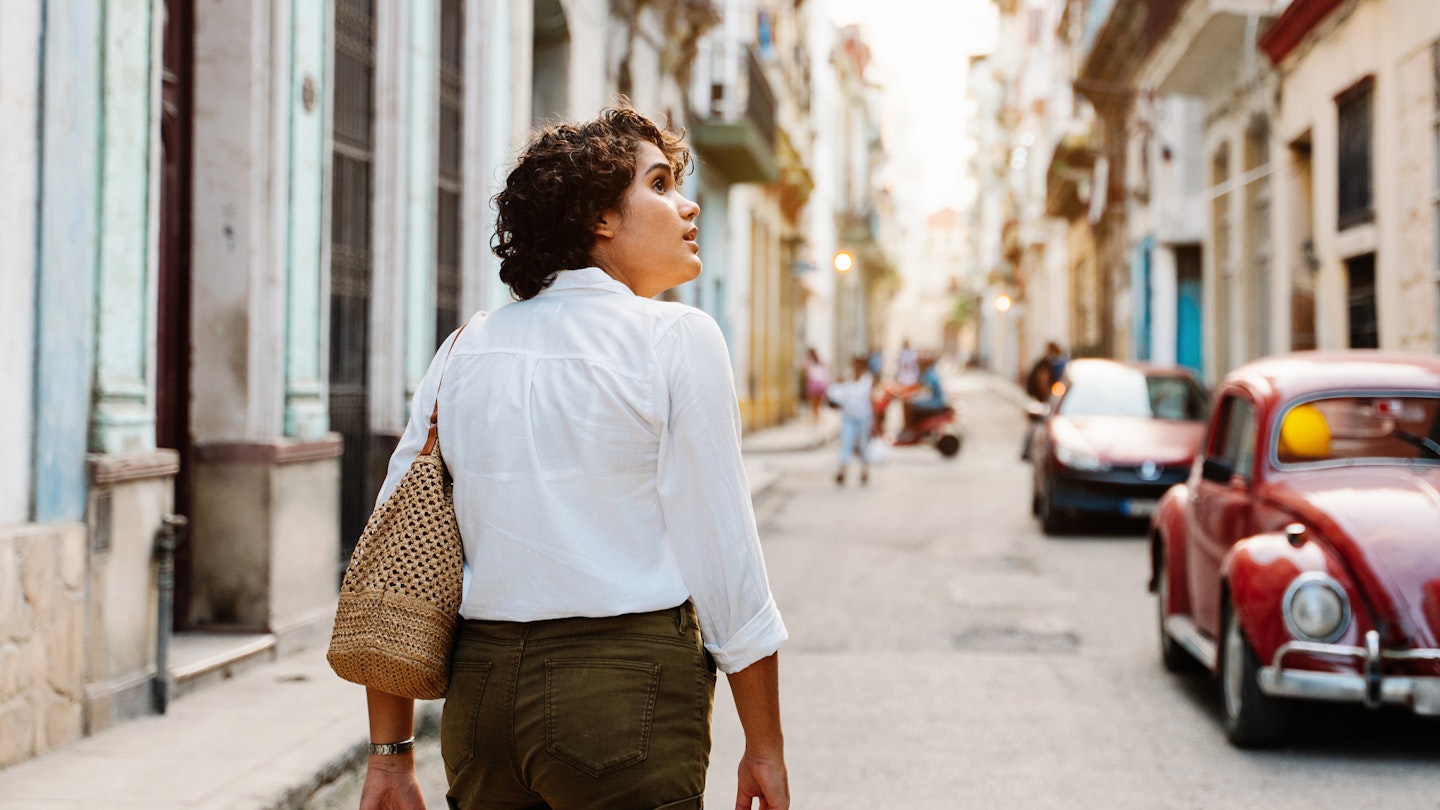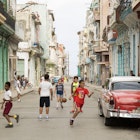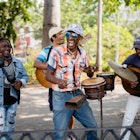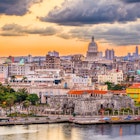Navigating Havana’s confusing dual economy can be a tricky proposition, even for Cubans.
But visiting on a budget is possible, it's just a matter of being flexible and acquiring a basic understanding of the local mecánica (Cuban way of doing things).
We've got the lowdown on the tips and advice you need to manage your money in the Cuban capital.
Daily costs in Havana
- Double room in three-star hotel (low season): US$150
- Double room in casa particular: US$30–50
- Public bus in Havana: US$0.40
- Taxi from Centro Habana to the airport: US$30
- Coffee: US$1–3
- Sandwich: US$6–7
- Dinner for two: US$40
- Bottle of beer in a bar: US$2–4
- Mojito: US$3–5
Shop around for flights and be flexible with dates
Flying is the only practical way of getting to Havana from outside Cuba. Book well in advance through a reputable agency if you want to snag a reasonable deal – some package deals combining flights and hotels can bring hefty discounts. Off-season (April to June, September and October) generally has the cheapest rates.
Visit in spring or fall
Peak season in Havana runs from November to March, and you can expect hotel rates to be at least 10% higher, nudging up to 25% higher around Christmas and New Year. Your best bet for a bargain is between Easter and late June or September and October.
Caveats come with traveling at these times – most notably the weather, though Havana's rain is rarely constant, and big storms only hit every four or five years.
Stay in a casa particular
Bedding down in one of Havana’s private homestays, known as casas particulares, nearly always works out cheaper than a hotel – plus, you’ll invariably be offered warm, informal service and candid insight into Cuban life.
In Havana, a decent double room can cost as little as US$30 a night, compared to the US$400 you might pay in one of the city’s best five-star hotels.
Thousands of casas particulares are spread around the metro area, and most owners accept payment in euros, Canadian dollars or British pounds, meaning you won’t lose out on changing money.
State-run restaurants are usually cheaper than private restaurants
While state-run restaurants might be cheap, they nearly always serve lower-quality food with limited menus and apathetic service. Budget travelers should consider eating in their casa particular, where it’s possible to save money without sacrificing food quality.
Substantial casa breakfasts with eggs, toast, coffee and fruit typically cost the equivalent of US$5, and hearty home-cooked dinners start at around US$10.

Listen to live music for the price of a tip
All over Havana, but particularly in Habana Vieja, bars and restaurants regularly host live music, and it’s usually of excellent quality.
The most you’ll be asked to pay to listen to these ultra-talented musicians is the price of a drink, plus whatever tip you decide to leave in the hat, basket or jar afterward.
Enjoy the free art
Havana is brimming with art and culture, and many of its private galleries are free to enter. Something bizarre and interesting is always happening at El Ojo del Ciclón, the artistic lair of Leo D'Lázaro.
Well-known Cuban actor and painter Jorge Perugorría owns Galería-Taller Gorría in the San Isidro district and offers an endless conveyor belt of fine contemporary exhibits.
Street art is another Havana forte. You’ll find thought-provoking Afro-Cuban art and alfresco Sunday rumba performances in Callejón de Hamel. The free-to-wander Callejón de los Peluqueros is an unusual homage to barbers and hairdressing, much of it depicted in art.
The pinnacle of Havana street art is Fusterlandia, an entire neighborhood given over to surrealistic mosaics and murals that’ll provide you with a good half-day of free wandering.
Central Havana is mostly walkable
To get around, forget renting a car, and avoid hailing too many expensive taxis. Havana’s central core – namely the neighborhoods of Habana Vieja, Centro Habana and Vedado – is highly walkable. Be aware of uneven sidewalks, speeding bicycle taxis and heavy heat and humidity, especially in the summer.
Not all taxis are the same
Modern state-owned taxis that wait at ranks outside hotels are invariably more expensive than the yellow-and-black Ladas that operate privately, although you’ll sacrifice air-conditioning and comfort in the Russian cars.
Cheaper still are shared taxis, also known as colectivos or almendrones. These old American autos run along fixed routes and take up to five passengers at a time. Flagging one down involves a series of complicated hand signals. Ask a local.
Budget travelers without a deep knowledge of Cuban culture generally gravitate toward private Lada taxis. Negotiate a fare before you get in. Most private drivers will accept foreign cash, and you’ll save money if you pay this way.
Metro buses are super cheap
Havana’s metro buses, known as guaguas (pronounced “wah-wahs”), run on 17 routes throughout the city, fanning out into the suburbs. The buses are usually crowded, and bus stops aren’t always well-marked, meaning tourists rarely use them.
However, if you’re on a tight budget, it’s worth checking out the route map. Metro buses are particularly useful if you’re heading out to the suburbs to see popular sights such as Parque Lenin and Museo Hemingway. Fares are super cheap and charged in Cuban pesos. Pay upon entry, and watch your bags.
The newer, amber-colored minibuses called taxi ruteros are another option. They run along fixed routes in central Havana and cost a little more than guaguas, but you’ll still rarely pay more than 25 pesos for a journey.

Browse the halls and gardens of Havana’s famous hotels
Havana has some iconic hotels, and most of them are easygoing about letting non-guests enter to admire the art and architecture and soak up the ambiance.
Top of the list is Hotel Nacional, an essential stop for all first-time Havana visitors, with its grand lobby, 24-hour cafe and museum-like Hall of Fame stuffed with photos of prestigious past guests, including Frank Sinatra and Leonardo DiCaprio. Round it off with a stroll through the manicured gardens and a mojito in the alfresco bar.
Hotel Sevilla, with its stucco and Moorish tiles, was once a notorious mafia stronghold (Al Capone used to book the entire 6th floor) and has a magnificent lobby, retro outdoor pool and romantic 9th-floor restaurant where a violinist serenades diners.
Inglaterra, Havana’s oldest hotel, is another palatial building with a Moorish lobby and walls embellished with historic memorabilia relating to Cuban national hero José Martí, who once stayed there.
Get up to speed with Cuba’s currency changes
Cuba has a confusing monetary system, and the country is still reeling from a complicated currency unification in 2021. A rampant black market pervades all areas of society, and exchange rates in banks are radically different from those on the street. In early 2022, the euro-to-peso exchange rate was 1:27 in banks but closer to 1:60 on the street.
The best plan, especially if you’re on a tight budget, is to arrive with plenty of funds in foreign cash, preferably euros, and to avoid changing too much of it into Cuban pesos.
Most private businesses – from restaurants to taxis and to casas particulares – accept payment in euros (and to a lesser extent Canadian dollars and British pounds) at favorable “street” exchange rates.
Thus, a 500 peso meal at a good private restaurant will cost you the equivalent of €18.50 using bank-exchanged pesos, but less than half of that if you pay in euros.
Havana has plenty of ATMs that accept non–US linked credit and debit cards, although they only dispense Cuban pesos at bank rates.
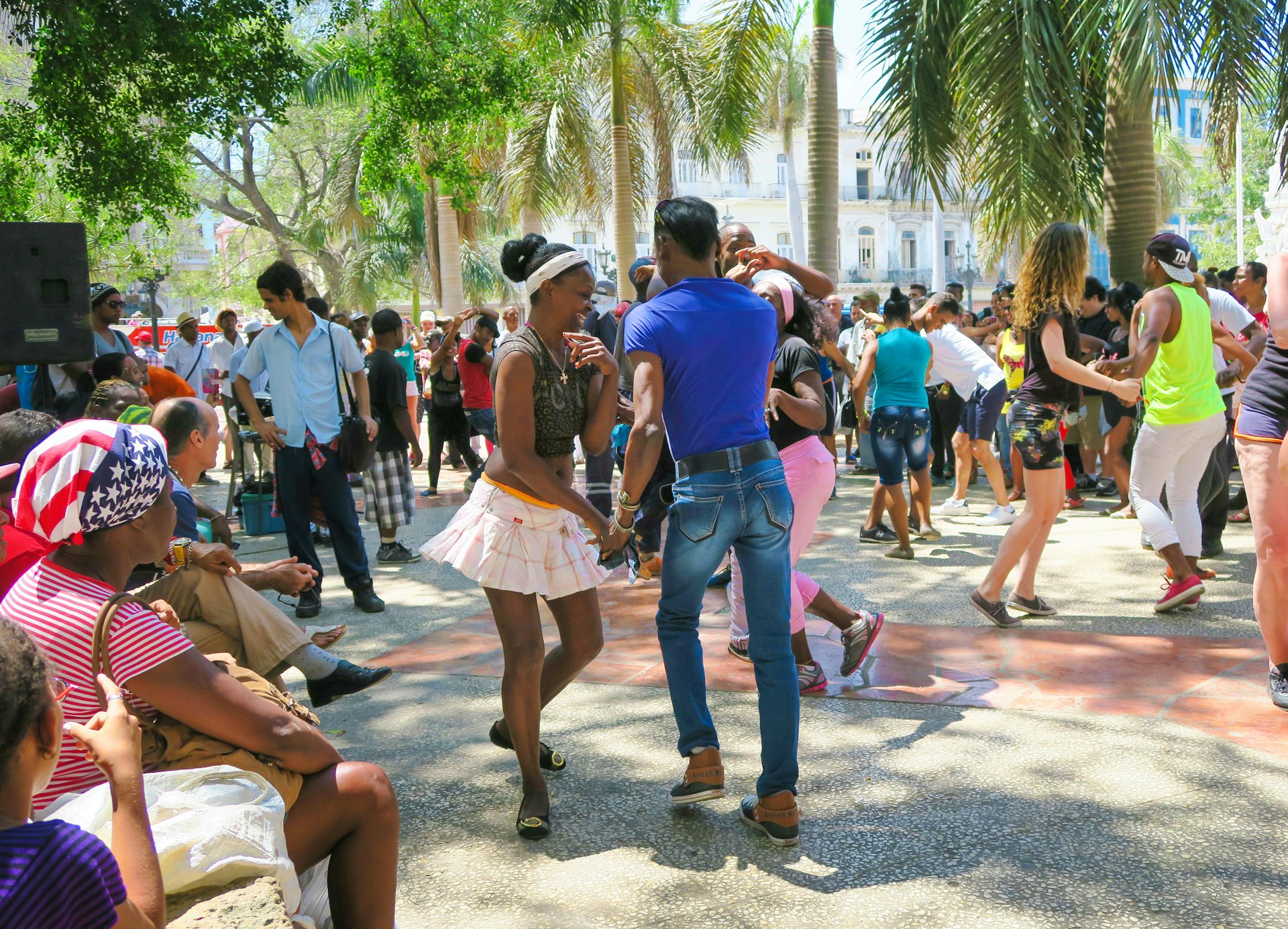
Discover fun and theater on Havana’s streets
Havana is a visceral city where life is lived out in the open. Strolling around its animated if dilapidated neighborhoods will give you a fabulous insight into what makes the city tick. Habana Vieja and Centro Habana are chock-a-block with a cacophony of street life.
Look out for hotly contested games of dominoes, impromptu baseball, Afro-Cuban religious ceremonies and yodeling pregoneros (street criers) selling bread, nuts and fruit.
Follow the locals to theaters, venues and sports games
In Cuba, entertainment is considered a right of the people, and tickets to live music, theater and sports events cost a fraction of what they do in the US or Europe.
As the hub of Cuba’s cultural life, Havana has an abundance of options. You can see a top choral or chamber music concert at the deconsecrated Basílica Menor de San Francisco de Asís or live salsa at Casa de la Música for around CUP$125.
At the trendy art factory and performance space Fábrica de Arte Cubano, everything from jazz to hip-hop to dance lessons is on show, all for a one-off entry fee of CUP$50.
A trip to see Havana’s hard-hitting Industriales play baseball at Estadio Latinoamericano, where former US president Barack Obama sidled up to Raúl Castro in 2016, is similarly light on the wallet, with tickets priced in small change.

